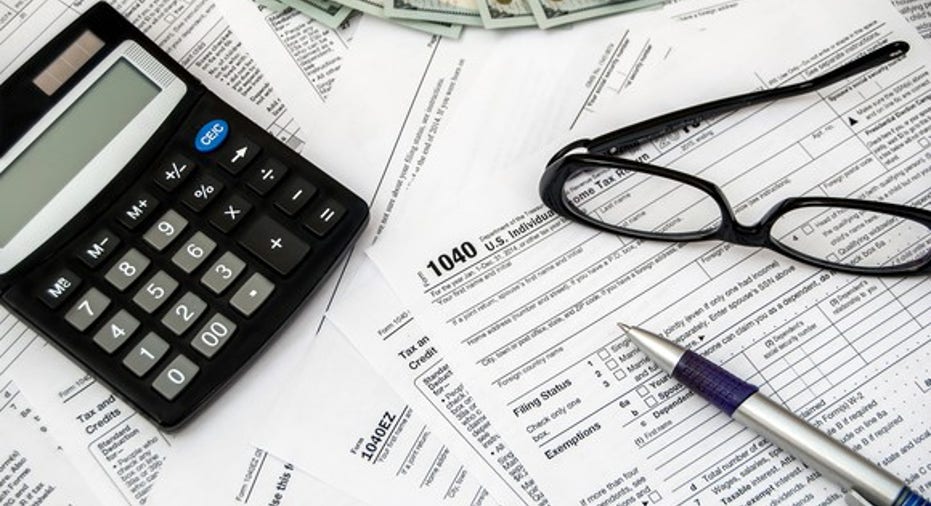The Average American Investor Saved Up to $1,497 By Doing This. Did You?

Investors pay taxes on the income that their portfolios generate, and so they're highly motivated to do what they can to save on taxes. One tax break available to investors offers a lower rate on the income that they get from qualified dividends. In some cases, the savings from this tax break can cut your tax rate by as much as 20 percentage points, and some taxpayers actually get tax-free dividend income as a result of the provision. Here's how you can take advantage of the same qualified dividend tax break that got the average American investor a lower rate on almost $7,500 of their dividend income.
Image source: Getty Images.
Lower taxes on qualified dividends
Tax laws have changed over time, and dividend income didn't used to get a preferential rate. Instead, dividends got the same treatment as any other type of investment income, and ordinary income tax rates applied that currently span all the way up to 39.6%.
However, dividends got a tax break in the early 2000s, offering lower tax rates than ordinary income. For those in the 10% or 15% marginal tax brackets, dividend income gets taxed at 0%. Those in the 25% to 35% brackets pay a lower 15% tax rate, while those in the top 39.6% bracket pay 20% in tax on qualified dividends.
So what makes a dividend qualified? You must receive the dividend from a U.S. corporation, a corporation incorporated in a U.S. possession, or a foreign corporation that trades on a major U.S. stock exchange. Also, you have to hold onto the shares that paid the dividend for more than half of a 121-day period that starts 60 days before the stock's ex-dividend date and ends 60 days after that date.
Even if you follow these guidelines, there are still some dividends that don't get preferential treatment. Real estate investment trusts pass through their income and its tax characteristics to their shareholders, and so their distributions typically don't qualify for preferential treatment. Also, dividends from employee stock ownership plans, capital gains distributions, tax-exempt corporation dividends, and dividends on credit-union or bank deposits don't qualify.
How much can you save?
More than 25.7 million taxpayers used the qualified dividend tax break to reduce their tax bill in the most recent year for which data is available. That might sound like a small number compared to the American population, but the figure actually represents almost 93% of all those who received any sort of dividend income. The tax break applied to more than $192 billion in qualified dividends paid out during the year.
Using the precise figures from the IRS, taxpayers who took advantage of qualified dividends claimed an average of $7,488 on their tax returns. The data doesn't reveal the true tax savings, but you can estimate using the fact that the tax break reduces the rate on that income by between 10 and 20 percentage points. Based on the average qualified dividend income, savings would have ranged from $749 up to as much as $1,497.
More taxpayers are choosing dividends
The trend toward dividend investing is catching on. It's still the case that more taxpayers claim interest income, which is not eligible for a preferred rate, than receive dividend income -- by more than a three-to-two margin in the most recent data. Yet when you compare taxable interest to qualified dividends, the interest amounts to less than half of the dividend income. That shows how many American taxpayers have bank accounts that pay modest amounts of interest income that nevertheless have to get reported.
Some believe that rising interest rates in 2017 could reverse the trend toward dividend investing. However, rates are so low that it would take a sizable reversal in order to bring them back into line with what you can get from high-quality dividend stocks. The tax benefits of qualified dividends only make it more likely that investors won't make the switch back.
Investors should look closely at getting more of their investment income through dividends. Tax benefits are just one of the benefits of dividend stocks, and for those who need both income and future growth prospects, it's hard to do better than the power of dividends.
The $15,834 Social Security bonus most retirees completely overlook If you're like most Americans, you're a few years (or more) behind on your retirement savings. But a handful of little-known "Social Security secrets" could help ensure a boost in your retirement income. For example: one easy trick could pay you as much as $15,834 more... each year! Once you learn how to maximize your Social Security benefits, we think you could retire confidently with the peace of mind we're all after.Simply click here to discover how to learn more about these strategies.
The Motley Fool has a disclosure policy.



















